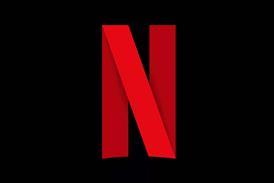Beowulf is an ideal subject for a Hollywood adaptation. The original poem, written in Old English some time before the year 1010, is heavily formulaic. It features a seemingly indestructible hero whose bodily strength is highly fetishised. There's plenty of violence - and we can generate a bit of sex too by reading well between the lines. And it has a three-part structure cadenced by the killing of three monsters.
One could argue that cinema has a great deal in common with the oral epic tradition from which Beowulf emerged. Oral epics contained frequent stock scenes, many of which have been carried through wholesale into certain genres of feature film. The arming of the hero connects Homer's Odyssey with Kill Bill. The 'hero on the beach' trope links Beowulf with Atonement or Saving Private Ryan. The hero's fight with the monster is a Hollywood staple - especially if we extend the sense of 'monster' to include 'inner demons'.
Populist pastimes
Both oral epic and cinema are populist forms, and although the venue has changed - from village hall to multiplex - the conditions of reception are not all that different. Back in the days when literacy was confined to monasteries and courts, travelling bards or jongleurs would recite a hero's deeds to a seated local audience in a designated space. Just like cinema, oral storytelling reached out to communities that had little access to other, 'higher' forms of entertainment.
In his 1980 book Orality And Literacy, cultural historian Walter Ong posited an evolutionary model that led from oral story-telling, through manuscripts and print, to electronic media. But he also hinted this might be more a cycle than a line, with a curious short-circuit between the storytellers and the film-makers or video-game creators: "Many cultures and sub-cultures, even in a high-technology ambiance, preserve much of the mindset of primary orality."
If this seems far-fetched, think of the way the seemingly obscure academic field of folklore studies has influenced commercial screenplays. The Morphology Of The Folk Tale, a long 1920s essay from Russian academic Vladimir Propp, is at the origin of the oft-repeated axiom that there are only nine (or 10 or 12, etc) basic movie plots (Propp made the same claim for the Russian folktale). And The Hero With A Thousand Faces, a 1949 study by comparative mythologist Joseph Campbell, inspired directly the story and structure of George Lucas' Star Wars.
Professors and producers
What links the professors and the producers is the idea there are archetypal stories and situations encoded in our race memory, or even, perhaps, in our DNA. The pot of gold that's being chased here is the idea that, if only we can embed these chord-twanging scenes in our screenplays, we're on to a box-office winner.
Like Beowulf. As plenty of critics have pointed out, the film is both absurd (Ray Winstone's accent, Angelina Jolie's nipple-less gold birthday suit) and strangely powerful. Interestingly, although the scriptwriters' intuition of turning Beowulf into an unreliable narrator (he only says he killed Grendel's mother) is intriguing, the film doesn't seem to derive any of its energy from this, or from most of the other additions to or interpretations of the original text.
There's something in the story-archetype theory, that helps explain why I came out of Beowulf scoffing yet unable to dislodge certain scenes from my mind. And while motion-capture technology isn't quite there yet, I'm prepared to concede the impact of these ancient stories can be enhanced through extreme stylisation - something we saw, to a slightly lesser degree, in 300.
It's no accident that 2D animation turned out to be the ideal medium for the cinematic adaptation of fairy tales. So it's unsurprising, in a way, that darker myths and sagas such as Beowulf are spearheading the new 3D meld of actor and avatar.



















No comments yet